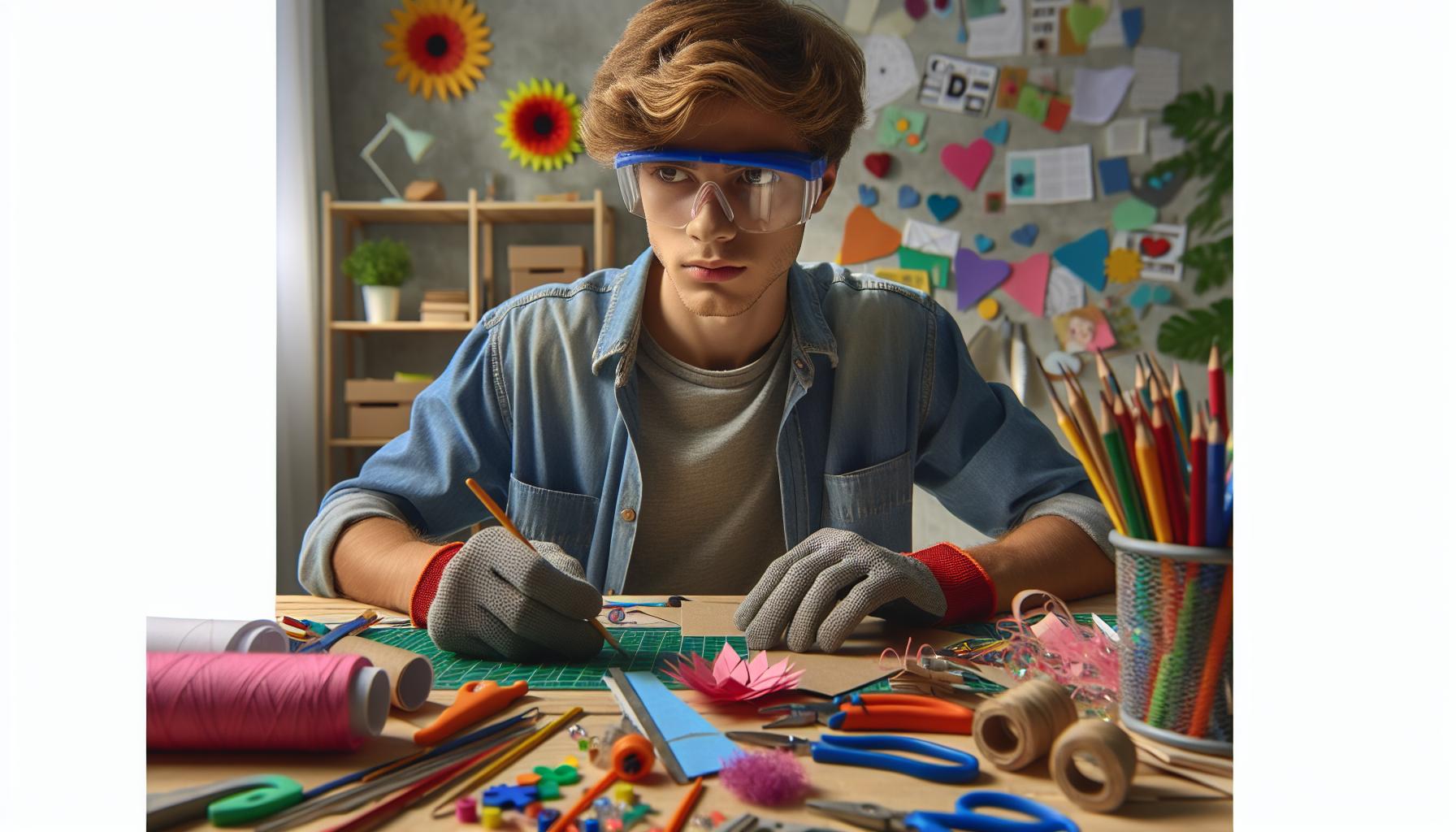As a student, finding ways to express creativity while managing a tight budget can be a challenge. That’s where DIY projects come in. They offer a fantastic opportunity to craft something unique, learn new skills, and even personalize your living space. Plus, the satisfaction of creating something with your own hands is truly rewarding.
Key Takeaways
- DIY Projects Foster Creativity: Engaging in hands-on DIY projects allows students to express their individual styles and enhance their creativity through experimentation and innovation.
- Skill Development: Participating in DIY activities helps students acquire practical skills such as sewing, woodworking, and painting, promoting self-sufficiency and confidence.
- Personalization of Spaces: DIY home improvement projects, like painting and creating custom shelving, enable students to personalize their living environments while showcasing their unique tastes.
- Budget-Friendly Solutions: DIY projects offer cost-effective ways to create custom items and enhance living spaces, making them ideal for students on a budget.
- Effective Planning is Key: Selecting the right project and gathering necessary materials beforehand promotes a smooth and enjoyable crafting experience.
- Safety First: Prioritizing safety during DIY projects by using protective gear and understanding tools and materials is essential for a secure crafting environment.
Benefits Of DIY Projects For Students
DIY projects offer significant advantages for students, including opportunities to develop creativity and acquire practical skills. Engaging in these activities fosters personal growth and enhances self-expression.
Enhancing Creativity
Engaging in DIY projects stimulates creativity through hands-on explorations. Students can brainstorm ideas, experiment with materials, and refine their concepts. For example, creating personalized decor for dorm rooms allows for the expression of individual styles. Such projects encourage out-of-the-box thinking, which boosts problem-solving and innovation.
Building Practical Skills
Participating in DIY projects builds valuable practical skills that extend beyond the classroom. Students learn techniques like sewing, woodworking, or painting. Mastering these skills enhances confidence and encourages self-sufficiency. Projects require planning and organization, which improve time management. Additionally, students develop critical thinking and resourcefulness while overcoming challenges during the crafting process.
Popular DIY Projects For Students

Students often seek engaging and budget-friendly DIY projects. These projects allow for self-expression and personalization, making them ideal for creative exploration.
Craft Projects
Craft projects offer a wide array of options. Students can create custom wall art using canvases and acrylic paints, resulting in unique decor. Upcycling materials, such as converting old t-shirts into tote bags, emphasizes sustainability while developing sewing skills. Moreover, students may enjoy making personalized journals or scrapbooks to document their experiences.
Creative beadwork can lead to jewelry-making, fostering fine motor skills. Additionally, students can explore origami, learning intricate folding techniques that enhance patience and focus.
Home Improvement Projects
Home improvement projects can transform students’ living spaces effectively. Students can paint accent walls to add a fresh look to dull rooms. Creating shelving from reclaimed wood optimizes storage and showcases personal style.
I often recommend assembling furniture from flat-pack options, which encourages resourcefulness and problem-solving skills. Crafting DIY cork boards using old wine corks can serve both functional and aesthetic purposes.
Lastly, students can enhance lighting with DIY lamp upgrades, using colorful fabrics or decorative paper to personalize lampshades, elevating ambiance. Students benefit from these hands-on experiences, gaining valuable skills while improving their surroundings.
How To Get Started With DIY Projects

Getting started with DIY projects involves thoughtful planning and preparation. I’ll outline how to choose the right project and gather necessary materials.
Choosing The Right Project
Selecting a suitable project starts with assessing personal interests and skill levels. I recommend focusing on projects that excite you, whether they’re creative crafts or practical improvements. Consider available resources and space; smaller projects suit limited areas. Research popular DIY ideas that align with your preferences, such as custom wall art or upcycling furniture. By examining tutorials and inspiration online, I can identify projects that match my ability and available time.
Gathering Materials
Collecting materials remains a crucial step before diving into a project. Start with a checklist of supplies based on the chosen project requirements. I often look for inexpensive materials at local thrift stores, dollar stores, or even my own home. This approach promotes resourcefulness and creativity by repurposing items like old clothes for sewing crafts or scrap wood for furniture projects. Make sure to invest in some basic tools, such as scissors, glue, and paintbrushes. Having everything ready ensures a smooth crafting experience.
Tips For Successful DIY Projects

Effective DIY projects require thoughtful planning and execution. Following these tips can enhance the experience and outcome of any project.
Time Management
Establishing a clear timeline for each project is essential. Break down larger tasks into smaller, manageable steps and allocate specific time blocks for each. Prioritize tasks based on complexity and your availability, ensuring you set realistic deadlines. Incorporate buffer time to address unexpected challenges or delays, as the hands-on nature of DIY often leads to unforeseen circumstances. Using a planner or digital calendar helps in tracking progress and keeping organized.
Safety Precautions
Maintaining a safe workspace is crucial when conducting DIY projects. Always wear appropriate personal protective equipment, such as gloves and goggles, when using tools or materials that could pose risks. Familiarize yourself with the tools and materials before starting; read manuals and safety instructions. Ensure adequate ventilation in areas where paint or adhesives are used to avoid harmful fumes. Keep emergency contact numbers easily accessible, and if working with sharp objects, handle them with extra caution to prevent injuries.
Conclusion
Embracing DIY projects has been a transformative experience for me as a student. It’s incredible how much creativity can flourish when I work with my hands and repurpose materials. Each project not only brightens my living space but also boosts my confidence and practical skills.
I’ve found that the process of crafting allows me to express myself while tackling challenges head-on. Whether I’m painting a wall or creating custom decor, every step is a lesson in resourcefulness and time management.
I encourage fellow students to dive into DIY projects that resonate with them. It’s a rewarding journey that fosters creativity and personal growth while making our environments feel uniquely ours. So grab those supplies and let your imagination run wild!





